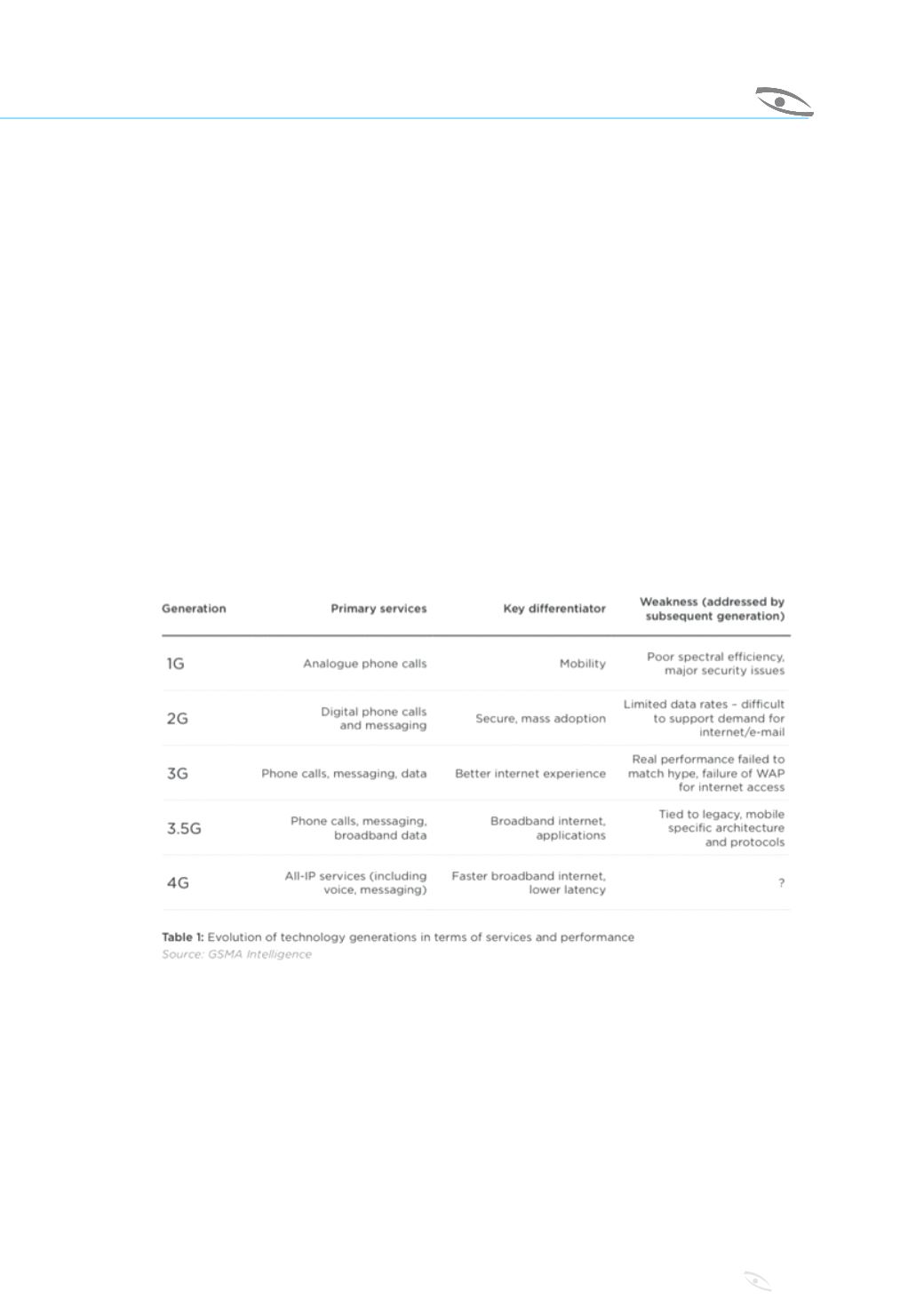
59
magazine
ALRAQABA
Networks of the fourth generation (4G) or what is now known as Long-Term Evolution (LTE)
introduced the smartphones and tablets which enabled voice and data transmission at pre-
mium speeds that reached millions of bites / sec (Mbps). The upcoming generation (5G) is
expected to mark a quantum leap in performance to keep pace with the cellular networks
data exchange requirements, especially the large files of Multimedia. It also gave great con-
sideration to the steady increase of cellular network users all around the world, as it refers to
billions of users, devices and connections. Accordingly, it is essential to set new standards
in order to absorb all of these developments.
The Fifth Generation (5G)… what is that?
The need to provide the optimum services and fulfill the requirements is considered as the
key stimulus that guides the improvement process in the cellular phones networks since the
analog system down to the LTE systems. For example, the main reason behind the switch
from the second generation (2G) to the third (3G) was to activate the internet services of the
users’ cellular devices. The said was only achieved when a quantum leap occurred through
the so-called 3.5G networks in which Mobile Broadband Networks and Smartphones were
compatible, developing the internet experience in mobile phones and thus the applica-
tions we see today. The following table demonstrates the evolution of each generation, the
services provides and provides a brief comparison with reference to the key features and
disadvantages.
According to the above mentioned, the fifth generation is a series of networks that aims to
meet the following requirements:
1- Data transfer speed scores within (1-10 Gbps) .
2- Moderate network delays to 1 mSec.
3- 1000 times the capacity per unit area.
4- 10-100 times the number of connected devices.
5- 99.999% availability of the network.
6- 100% coverage.
7- 90% reduction in network power.
8- Extend battery life over 10 years for low power devices.
As these requirements may all be difficult to meet through the technology available to man-
ufacturers and with consideration to accompanying financial cost, some companies may


